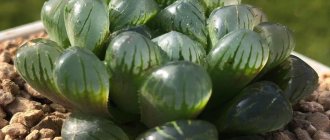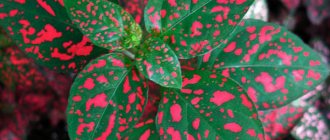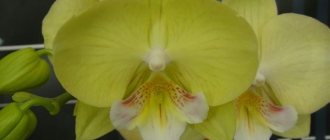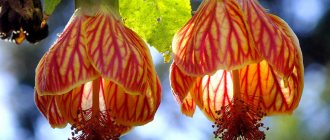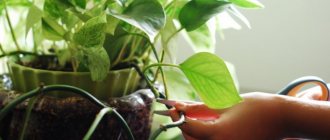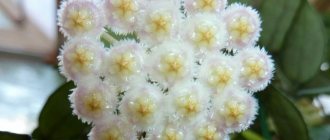- March 11, 2019
- Houseplants
- Marina Olenyuk
Surprisingly, even in our time, people tend to believe in various signs that have no scientific basis. One of these thoughts includes the fact that indoor vines, photos of which will be present in abundance in this article today, are capable of quarreling lovers and “surviving” any male creature from the house. Naturally, many consider this an unfair accusation against innocent plants.
Green pets, on the contrary, will clear the atmosphere of unfavorable elements and saturate them with oxygen, which is so necessary for any living creature. And if you really believe in something like that, then, for example, people who study energy flows have long told the world that all indoor vines (photos and names of flowers are attached) do not harm even at the energy level. On the contrary, all kinds of ivies with flowing thin stems and other climbing flowers expel all negative emotions from the room in which they settle. And such plants also perfectly purify the air and decorate the interior.
general information
Non-flowering and flowering indoor vines, the photos and names of which we will now get acquainted with, are climbing evergreens. Loaches are quickly able to cling to or wrap around a support. This property is achieved due to the peculiar growth of the stem. If desired, you can grow vines in the form of hanging crops. Then the plants will look like an attractive green waterfall.
But most often, flower growers independently wind flexible lashes onto special devices (rings, ladders), which flower shops abound in today, in order to direct the growth of shoots in the right direction.
It is preferable to plant plants with climbing and hanging shoots in hanging pots. This way you create a gorgeous “waterfall” of shoots and will not damage the stems when caring for the plant. Hanging baskets are difficult to reach for small children and tricky pets such as cats.
Lianas are indoor plants suitable for landscaping even those places in the apartment where other flowers feel uncomfortable. These may be corners of the room that are too shaded or, conversely, flooded with sunlight. Loaches are especially good for vertical decoration. Some non-flowering and flowering indoor vines perfectly decorate not the most attractive corners in the room.
Shade-loving loaches
Not all summer residents have areas completely flooded with sun. There are places in the shade that you also want to decorate with beautiful flowers.
Aristolochia (kirkazon)
A plant with large leaves and original flowers looks very beautiful when it entwines coniferous trees. Against the background of dark spruce trees, Aristolochia stands out unusually beautifully.
If the hedge is made of coniferous trees, then in some places a solid coniferous wall can be diluted with aristolochia.
Prince
Prince is a close relative of clematis, but is not at all demanding of care. The flower is interesting because it blooms very early. Its large white, blue or purple flowers will decorate any support.
It quickly entwines the wall with jagged edges of leaves and rises up, creating a very beautiful picture.
Sun and water
As for caring for plants, they usually do not cause much trouble. Some difficulties, of course, may arise, but this is only in the case when you did not calculate and acquired a plant that is not quite suitable for your apartment. For example, the room faces north or west, and you purchased an indoor vine that loves sunny places. Or vice versa: the plant loves shade, but your room is illuminated by the bright scorching sun all day. Under these conditions, a plant that should grow in moderate shade will wither and become distressed with thin, pale stems and leaves. There are flowering indoor vines that, if placed incorrectly, will delight you with a gorgeous green mass, but you cannot expect flowers from them. Many are satisfied with this state of affairs, and the absence of buds is not considered something wrong. In addition, not all plants with beautiful leaves can please with equally beautiful flowering.
If you are still full of enthusiasm, then let's start getting acquainted with vines and ivies. The name and photo of indoor plants, as well as the conditions for keeping them, will help you make your choice.
Lianas with decorative leaves
Below are climbing plants with photos, names and descriptions, the main decoration of which is decorative leaves. They are either non-flowering, or their flowers are small and undecorative.
Epipremnum aureus
The heat-loving evergreen vine Epipremnum aureum can only be grown indoors in countries with cool climates. The species tolerates cold well, but is destroyed by frost. This is an extremely unpretentious climbing plant. Loves shade or partial shade (varieties with variegated leaves need more sun). Watering: moderate.
Epipremnum Gold - in apartments it grows up to 2-3 m (in nature it reaches up to 20 m). Its main decoration is leaves shaped like hearts, green and golden-green. The variegated varieties look especially interesting: yellow-green and white-green. In nature, epipremnum climbs tree trunks with the help of tenacious aerial roots. In apartments, the plant needs help to climb onto supports - it is better to tie up the shoots. Young specimens look beautiful on high shelves or pedestals when the stems hang down. Epipremnum does not bloom in apartments. Only in nature can you see its small flowers.
Golden epipremnum is an extremely undemanding plant, ideal for beginners, and tolerates the microclimate in apartments, including dry air during the heating season. Tolerates drafts and temperature fluctuations. In the northern rooms, the epipremnum can be carried out around the window. In eastern and western rooms it grows better on trellises located near the windows, in southern rooms - in the back of the room. The plant can be grown in bathrooms, kitchens, technical rooms (with windows). Suitable for creating compositions with other plants.
A universal substrate for indoor plants is suitable for planting epipremnum. A thin layer (1-2 cm) of drainage (expanded clay) is poured onto the bottom of the pot. Epipremnum is replanted every 1-2 years. When it reaches several meters in length, it is not easy. It is worth rooting shoot cuttings in advance and growing young plants. Over time, they will replace the old copy. On balconies and terraces, the vine is usually grown as an annual plant, for example, in compositions with begonias and fuchsias.
The plant is fed from March to October. It is better to use fertilizers for decorative potted flowers.
Interesting varieties of epipremnum:
- “Jade” Jade – green leaves;
- “Marble Queen” Marble Queen – white-green leaves;
- “Neon” Neon – leaves are golden-green.
Tradescantia zebrina
One of the most popular indoor plants is Tradescantia zebrina, native to Central America. In nature, its long shoots crawl along the ground, hang from rocks and slopes, and entwine fallen trees. The species has leaves with characteristic stripes, reminiscent of the coloring of a zebra. The color is especially intense from spring to autumn. The leaves are tender, the shoots are fragile. In spring, the plant’s additional decoration is pink, small flowers. Sometimes flowering repeats in the fall, but there are much fewer flowers.
Tradescantia grows quickly, reaching a meter in length in apartments. Their long shoots can be strung on decorative trellises driven into the ground in a pot or on wall trellises. They look beautiful on high stands, from where their shoots cascade down. Liana is undemanding. Suitable for growing in the living room, bedroom, kitchen, staircase, bathroom (with windows).
Attention! It must be remembered that in winter the tradescantia should not be placed close to the radiator.
After May 15, the vine can be taken out onto balconies, especially on the eastern and northern sides.
Tradescantia grow quickly, it is better to rejuvenate them every year - in the spring, the shoots are cut into pieces about 15 cm long and planted several in a pot. They take root very quickly.
Tradescantia is fertilized every 2 weeks from March to October. Liquid preparations for decorative potted flowers are recommended.
An interesting variety of Tradescantia zebrina "Quadricolor" Quadricolor - with leaves in 4 colors (green, purple, pink, silver).
Syngonium peduncle
In America, Syngonium podophyllum grows wild. In nature, it climbs tree trunks, reaching 10 meters. It is considered a weed in banana plantations. In pots, syngonium rarely has shoots longer than 2 m.
Syngonium leaves have a characteristic goosefoot shape, green color, and can be golden-green or pinkish-green. In nature, the flowers are small. Blooming syngoniums in apartments are rare. More often, flowers appear on specimens growing in greenhouses. Young syngoniums do not look like vines. Their shoots are raised and bushy. After 2-3 years, the shoots begin to lengthen and climb up the supports.
The liana is suitable for decorating rooms, stairs, and is often grown in offices. The temperature in these rooms should not fall below 15 °C.
Once every few years, overgrown plants need to be transplanted into fresh soil. Place a thin layer of drainage on the bottom of the pot.
Fertilization is carried out every 2-3 weeks from March to October.
Interesting varieties:
- "Golden Allusion" Golden Allusion - leaves are golden-green;
- "Neon Robusta" Neon Robusta - pinkish-green leaves;
- "Silver Knight" Silver Knight - leaves are silvery-green.
Ivy
A very beautiful potted vine - ivy. Common ivy with evergreen leaves is the most popular type of climbing indoor plant to decorate homes. Not only the green, classic common ivy is popular, but also numerous, beautiful, colorful varieties and previously little-known and rarely found species, for example, Canary ivy (Hedera canariensis) or Colchis ivy (Hedera colchica), which do not grow well in our climate in open ground due to low frost resistance. Ivy looks good on supports and in hanging pots.
Ivies come from forested areas, so their growing requirements are close to those in their natural habitat. They prefer semi-shaded and shady places, fertile, humus, permeable, constantly slightly moist substrate. Ivy prefers moist soil, but too much water can cause the leaves to yellow and fall off. After watering, remove water from the stand. It is worth spraying ivy leaves, especially when the air is dry. The bush should be trimmed regularly so that it grows more.
Varieties with green leaves can withstand more shade, while those with variegated or brightly colored leaves need more light to maintain intense shades (variegated leaves turn green in the shade). It is better to place ivy in semi-shaded places, away from windows and strong sunlight. The ideal temperature is 15-18 degrees Celsius.
Monstera deliciosa
A very fashionable plant is Monstera deliciosa. It is spectacular, grows quickly, and can reach significant sizes (the leaves of old specimens reach up to 1 m in length and 0.5-0.7 m in width). Suitable for large interiors – living rooms. It is not difficult to grow, but for proper development it requires a bright place with diffused light and fertile, slightly moist soil. Due to its large size and rapid growth, Monstera requires systematic fertilization during the season.
Cissus rhombifolia
Another popular attractive vine is Cissus rhombifolia. The decoration of the plant is the original leaves, consisting of three diamond-shaped green leaf plates shiny on top, arranged like an umbrella on the petiole. The species is showy, easy to grow, prefers a bright position with diffused light and slightly moist garden soil.
Philodendron foot-shaped
One of the most spectacular philodendrons is Philodendron pedatum. The species is native to the tropical forests of Central and South America. Philodendron Pedatum has narrow, heavily pubescent, long green leaves. Loves bright places, but not in direct sunlight.
The climbing philodendron will become an original decoration of any interior. Its carved leaves favor a further part of the living room than the one around the window. It doesn't grow too much, so it doesn't need much space.
Ficus dwarf
The dwarf ficus (Ficus pumila) is an excellent choice for medium to large pots. It is extremely resistant to diseases and pests, and grows well in universal and acidic soils. It is a creeping plant that crawls along the ground and, when in glass containers, likes to climb over other plants and walls. It grows quite quickly, develops well in a limited volume of substrate (pot), and responds well to pruning. The luscious green leaves give the ficus a lot of charm.
The plant loves high humidity. Ficus should be grown in well-drained containers. It loves pruning and grows quite quickly in hot conditions and high humidity. Optimal temperatures are 15-25 degrees Celsius.
Scindapsus
The homemade scindapsus vine is characterized by fairly high strength and no need for special care. These are ideal indoor vines for beginning gardeners who don't have a lot of time to care for.
The leaves of the plant are truly impressive. Due to the shape of the leaf blades, it is often confused with common ivy. However, scindapsus has larger leaves. It loves well-lit positions and can be placed on a windowsill or on the floor near balcony windows. In the absence of sun, the plant grows and looks no worse, but the leaves have a less saturated color.
These are vines that love the sun, but do not like high temperatures. Therefore, indoor temperatures below 24 °C, but not less than 20 °C, are preferable. Scindapsus loves moderate moisture in the air and in the pot. It is worth spraying its leaves in summer.
Godson Rowley
An unusual climbing species is Rowley's groundsel (Senecio rowleyanus). This plant is intended for experienced green lovers. It is as demanding as it looks good. It is distinguished by its characteristic balls on the stem. They resemble threads of coral - from the largest to the smallest.
The ragwort loves light, so places that are heavily illuminated by the sun are ideal for it. Regular watering is also important. Thanks to this, the plant will grow beautifully and its green color will be intense. For Senecio rowleyanus it is worth using special cactus soil.
Dischidia
The epiphytic plant Dischidia grows naturally on other plants, using them as support. In the house, dischidia will not reach spectacular sizes, but will delight you with its compact, attractive shape. The bright green leaves are decorated with light lines, reminiscent of the coloring of a watermelon. When it stands in a sunny place, its leaves turn red.
Dischidia is undemanding and hardy. Does not like excessive amounts of water and then loses its leaves. It should only be watered when the soil is dry. This is an ideal plant for those who forget about watering.
Sedum Burrito
The Sedum burrito succulent loves light. Without light, its braids are not as majestic, and large gaps appear between the leaves. The plant is easy to grow. Its hanging shoots, reminiscent of plant braids, look very impressive. The succulent does not like excess water; you should remember to water it moderately.
Wood's Ceropegia
The creeping flowering plant Ceropegia woodii looks very impressive. Its heart-shaped leaves look great. Woodii is available in a variety of colors, including a Variegata version. This is not a demanding plant; its leaves should be large and densely located on the shoots; there must be a lot of light.
Ceropegia takes root easily. Just cut off pieces of the shoots and put them in water, and within a week you will have good cuttings ready. The plant usually blooms in winter.
Asparagus dense-flowered
A liana from the asparagus family, Asparagus sprengeri, is grown as a potted plant, in greenhouses for cut greens, as an addition to bouquets and floral arrangements. Its long (up to 2 m), thin, flexible, hanging shoots are covered with rather loose branches. The root system grows intensively and consists of many white, fleshy roots that can accumulate water.
It grows best in a bright place and does not tolerate direct, harsh sunlight. You need to water regularly, in large doses - the substrate should always be slightly moist. It should be sprayed frequently and intensively, especially in winter (during the heating season) - otherwise the branches may dry out and fall off en masse. When the roots have completely filled the inside of the pot, the plant should be replanted. Due to the strong growth of the plant and its root system, this procedure is usually carried out annually in the spring.
Nephrolepis
The house fern Nephrolepsis decorated the apartments of our great-grandmothers, and is now experiencing a renaissance again. It grows naturally in the tropical forests of South America. It delights with beautiful long feathery leaves hanging down in curved arches. Depending on the variety, the leaves can reach 100-130 cm. They create a lush and spectacularly hanging trail, maintaining the light and openwork appearance of the plant. Nephrolepis fern looks most beautiful in hanging containers.
The fern prefers locations with plenty of indirect light, but will also tolerate semi-shaded or shaded positions, such as a north-facing window. Requires high air humidity, especially during the heating season and on hot summer days. This is a necessary condition when growing this fern; it must be sprayed frequently.
In summer, room temperature is enough for it; it can overwinter at a cool temperature of 16-18 °C. The soil should be permeable, light, slightly acidic, and constantly slightly moist. Watering should be done with soft, settled water at room temperature. From spring to late summer, the plant is fed with half the recommended amount of fertilizer for green-leaved plants.
Dichondra
Silver Dichondra can be found on balconies and terraces. This is an ornamental plant that is resistant to adverse weather conditions. It is characterized by small, silver leaves covered with fluff. They are impressive in their countless numbers. By planting dichondra in a flower pot and hanging it on the balcony, you can achieve a cascading effect.
The plant is not susceptible to diseases or pests. Loves fertile, well-drained soil. Ideally it should be placed in a sunny place. The roots do not like standing water; when planting in a pot, you should use pebbles or crushed stone as the first layer. The pot should have a drain so that no water remains on the stand.
Dichondra should be fertilized carefully so as not to damage the leaves. Fertilizing should be done once every 2 weeks with a solution of liquid fertilizers. It is better to water Dichondra with less water, but often.
Hedera
Usually this plant is called simply - indoor ivy. This flower has carved delta-shaped leaves and strong creeping shoots. The plant is not considered difficult to care for. It likes moderate shade and moist soil. However, you should not overwater the hedera; a lump of soil that is too wet will destroy the plant.
This type of ivy has small growths on its stems. If the stem reaches a favorable place, then clinging roots appear from these growths. Ivy grows where this root falls. Be careful. If, having decided to get a hedera, you hang it next to it or place a pot with another plant, then the ivy will not behave very modestly. He can “reach” with a branch to the soil of a neighboring pot and “land” safely in it.
In nature, this plant entwines entire slopes of rocky hills and even the mossy walls of ancient houses. It grows very quickly and hides bare spots. If you need to decorate such a corner in your room as soon as possible, ivy will cope with this task and will not cause any difficulties.
Don't wait for the hedera to bloom. The plant produces buds only at a fairly advanced age (10-13 years). No room is conducive to such a long life of this ivy.
Landing. General rules
If you purchased a home vine in a temporary pot, then within 2 weeks it will definitely need to be transplanted to the main place. To do this, you can simply roll over the earthen ball along with the plant itself, so as not to cause injury to the rhizome of the vine . When carrying out this work, you should try to hold the pet in such a way as not to accidentally break the shoots. It is recommended to replant indoor vines with an assistant - it will be easier and more convenient.
When planting the crop in question, it is important to take care of the drainage of fertile soil. Ordinary expanded clay is perfect for this, thanks to which the plant will receive moisture evenly. While the plant is small, the pot for it can also be compact, but as it grows, you will have to buy a more spacious “home” for the vine.
When planting decorative loaches at home, you should take care of high-quality and reliable supports. Without them, an actively growing plant will not hold its shape and frame certain surfaces.
Various parts are used as support, for example, a moss stick - there are a lot of options.
Epipremnum or scindapsus
A perennial evergreen indoor vine valued for its leaves. They are quite dense and polished. The shape of the plate is close to heart-shaped. The foliage may be variegated or have a uniform green color. The length of thick stems increases to thirty centimeters per year. In general, epipremnum is capable of growing four-meter lashes.
A rather unpretentious specimen that thrives with moderate watering. This indoor vine, the photo of which is presented above, will delight you with its gorgeous foliage only if there is bright but diffuse lighting. Be careful with the plant, because it is quite poisonous. Therefore, you should only care for it with gloves. In addition, you need to keep the plant away from children and pets.
Annual loaches
Not all gardeners prefer perennial plantings of climbing plants. Many people want to have a different picturesque picture on their site every year.
Climbing annuals have the following advantages:
- Easily propagated by seeds, grows quickly;
- Savings on purchasing seedlings;
- You can create many options when creating a landscape design by choosing different varieties of vines.
You won’t get bored with climbing annuals, because every year you can plant different varieties that will delight you with flowers of all shades and shapes.
morning glory
Morning glory is very similar to the well-known bindweed, but unlike ordinary bindweed, it can grow up to 5 meters. The leaves of the plant can be heart-shaped or openwork. Flowers can also come in a variety of colors.
Morning glory flowers, opening with the sunrise, turn after it. For this ability, morning glory has another name - “flower of dawn”. In dry summers it requires watering.
Hoya
Often, beginning flower growers purchase scindapsus, which was discussed above, under the guise of Hoya. And all due to the fact that the plant has equally dense and wide leaves. Otherwise they are very different.
The second name of the flower is wax ivy. This is what people called hoya for its flowers and glossy leaves, covered with a waxy coating. There is hardly a person passionate about plants who, having once seen the buds of wax ivy, would not want such beauty for his collection. For some, flowering comes easily, and hoya pleases with clusters of waxy flowers almost continuously. And someone can hardly achieve the blossoming of one or two brushes.
The stems eventually reach a length of up to six meters. The plant tolerates both dry and humid air. Small flowers are collected in lush umbrellas. Some clusters (or umbels) contain up to fifty small buds with five sharp petals. The aroma emanating during the flowering of the beauty is dizzying in the literal sense of the word. It's very bright. Therefore, under no circumstances should a flowering plant be kept in places where people sleep. East windows are the best place to grow hoya. Here it has enough sunny color for rapid growth and lush flowering, and at the same time the foliage does not suffer from sunburn.
Transplantation must be carried out with extreme caution
Before transplanting, it is worth assessing the condition of the plant itself and your capabilities. Due to their heavy weight, large vines (and often medium-sized indoor climbers) cannot be transplanted properly by yourself. The number of workers should allow not only to cope with a heavy clod of earth, but also to protect all shoots and leaves from injury.
It is better to transplant all vines, without exception, with minimal contact with the roots. Only the contaminated top layer of soil and freely crumbling soil are removed from the earthen clod. If you need to completely replace the soil, then the earthen ball is carefully loosened, and the roots are kept in a weak solution of fungicides (at least potassium permanganate).
When the root system is exposed, roots that are too long are trimmed and all damaged or dry areas are removed. In plants with a very dense root ball, formed as a result of a long absence of replanting and leading to an almost complete absence of soil inside the root ball, longitudinal cuts are made. Even if the vine is not capricious, the absence of unnecessary trauma to the roots will allow it to quickly adapt and grow.
The day before transplanting, water the vine to simplify the procedure. During transplantation, you need to act quickly, not allowing the roots to dry out. It is advisable to control the depth of the plant, keeping it the same and ensuring that the root collar is located approximately 2-3 cm below the edge of the pot, which will allow you to replace the top layer of soil without replanting in the future.
The vine should be positioned exactly in the middle of the pot, without moving, which could cause the container to lose stability as the plant develops. The substrate is poured in small portions, leaving it loose and not compacting it too hard.
Hoya. © Silas Price
Eschynanthus
Another interesting climbing flower with red flowers. It is not used very often in indoor gardening. Perhaps this happens because retail outlets offer aeschynanthus quite rarely. A very showy plant will feel great in a hanging pot. The shoots of the flower tend downwards and are decorated with bright red inflorescences. You can find flowers of aeschynanthus from red-orange to dark burgundy.
The stems grow up to half a meter. Over time, the older part becomes compacted and woody. The leaves of the vine are up to nine centimeters long. The flowers resemble tubes, narrowed on one side, and collected in inflorescences. The favorite part of the room for this plant is east and west. There is a lot of light and not too hot in the summer. During plant growth (spring - summer), water regularly. Before each subsequent moistening, it is worth checking the soil; the top layer should be dry.
General care recommendations
Climbing indoor plants are not particularly picky about their conditions. But when growing them, you should remember a number of subtleties and rules in order to create comfortable conditions for their living. Flowers and vines are placed so that their leaves do not touch each other. Most of them do not require much light, so their pots and vases can be placed in dark corners of the room.
Canopy plants love a lot of moisture, so they should be watered often. They often require moisture from a spray bottle, because many crops are native to the tropics, where it is always humid. Such measures will preserve the lush greenery of the bush and prevent the leaves from withering.
During the dormant period, the ampels are watered less frequently, but they should not be allowed to dry out. Water the plant every time the top layer of soil dries out.
To prevent water from spilling onto the floor, it is recommended to wear a shower cap on the bottom of the pot. An hour after watering it can be removed. During this time, all the necessary moisture will already be absorbed into the soil. You can water the plant not with water, but simply place pieces of ice on the ground. It will melt gradually and begin to saturate the substrate with moisture. You can remove excess water using tea bags, which are placed in a tray.
Monstera
A spectacular flower with huge carved leaf plates up to half a meter in length and width. At home, it is better to grow monstera in spacious rooms. The thick stem has many hanging roots. With them, the monstera masterfully clings to any bulges. For this reason, the plant must be provided with reliable and strong support. Loves moist soil and good, but not too bright light. The monstera reveals all its beauty in the fifth year of its life.
Loosening the soil
Indoor vines should be grown only in light and loose soil. But even if the soil meets these requirements, it still needs to be loosened periodically. This will help prevent compaction, as well as improve access of moisture and oxygen to the root system of the flower.
You need to loosen the soil a couple of times a week and after each watering, otherwise a crust will form on the surface of the soil, preventing normal air exchange. If the vine stems grow low above the surface of the pot and you can hardly see the soil, use a long, thin stick and loosen it very carefully.
Syngonium
A representative of the Araceae family has green and variegated foliage. More often they prefer to plant variegated varieties. An adult specimen forms a bunch of roots under each of its leaves in the hope of clinging to a suitable support or to the soil. Diffused lighting and a temperature of 18–25 degrees Celsius are comfortable indicators for the vine. Watering is regular, but not abundant.
Propagating syngonium is not difficult. Each root located under the leaf blade, touching the moistened soil, grows safely, and a new young specimen is obtained.
Mandevilla
The flower, although attractive, is capricious. The length of the shoots can reach four meters. The leaves are thick, shiny, pointed. The flowers of the vine are large and funnel-shaped, with five petals. They love this vine for its buds, each of which lasts up to ten days. The period when the capricious mandevilla pleases with flowering is also quite long.
Some varieties of these vines have a pleasant aroma. With proper care, flowering lasts from spring until late autumn. The plant does not tolerate cold at all. A temperature of 14 degrees can destroy the beauty. The rest of the care is quite prosaic: good light and properly regulated watering.
If mandevilla is trimmed regularly, it will grow into a lush bush covered in flowers. However, free-hanging plant vines are beautiful in their natural form.
Lighting
Most indoor vines like partial shade or even some shade. But some people need brighter light. These are the species that have “variegated”, that is, multi-colored leaves: Scindapsus, Cissus, Syngonium, Ceropegia. Bright light, but in no case direct sunlight, otherwise burns in the form of brown spots will appear on the leaves. The pot with the vine must be turned all the time so that all sides of the plant receive the same amount of illumination, otherwise the vine will stretch to one side and remain lopsided forever.
If you decide to decorate a dark room with a vine, then ivy is suitable for you. Monstera is also suitable, as well as Cissus antarcticus and Rhombicus rhombicus.
Cissus or indoor birch
A plant with such an interesting name (photo and description provided) is widespread and deservedly respected by flower growers. Cissus got its second name - birch - thanks to its leaves, or rather, their carved shape.
The indoor vine grows well, loves rich soil and spraying with settled boiled water. The leaves of the plant are dark and glossy. Unpretentious in care, cissus fits organically into any interior. Shaded areas of the apartment are suitable for the flower. And where other crops do not grow well, cissus feels great.
Doesn't like heat. For this vine it is more preferable to live in a cool place. If the cissus feels good, it will reward you with flowers and fruits - small inedible but beautiful balls.
The liana grows quite quickly. But in the first year of life, you need to have some patience, because the growth of the root mass helps the crop to slowly increase its green mass at the initial stage. The strong shoots of the vine can be left free; a waterfall of glossy leaves will give the place in which it grows the appearance of a wild corner of nature. The shoots feel great if you wrap them around any suitable support. In this way, you can direct the branches of the plant in a way that is convenient for the gardener.
Why is it worth growing vines in an apartment?
Lianas are a unique group of houseplants. With their help, you can create compositions on walls, shelves, and high flower beds. Currently, there are many diverse, attractive climbing species and varieties suitable for different conditions, rooms, and varying degrees of lighting. Sometimes this is the only opportunity for landscaping an apartment - due to the lack of free space for growing plants. Due to the fact that vines are flexible and can grow in different directions, they take up less space.
The presence of plants in the house introduces a piece of nature into the interior and allows you to relax. This is especially appreciated by residents of large cities who do not have the opportunity to communicate with nature every day.
Climbing decorative indoor plants are suitable for green screens and can even replace window curtains. With their help, you can emphasize some element of the interior, for example a painting, sculpture, mirror. They work well in unusual places, such as decorating a staircase. Some are suitable for landscaping balconies and terraces in the summer season.
How to choose vines for your interior style:
- In apartments decorated in a classic style, vines look good planted in stylized pots, mounted on a chest of drawers, placed on a wall or in a flower pot suspended from the ceiling. They can frame a door frame, a picture, a window, or hang on wall shelves.
- In modern interiors, vines wrap around supports, placed in straight geometric pots or planted in a container placed on a windowsill, coffee table or floor, look great. Their long, leafy shoots can hang attractively from tall, straight pots. Stands and flower beds for climbing plants are also available on the market in a modern look and with an interesting design.
- Original green walls look attractive in interiors. Plants can take up almost an entire wall of a room or create a striking display when framed.
It is recommended to choose supports for climbing flowers made of metal or bamboo. Wooden structures promote the development of bacteria and fungi that threaten plants.
A good option for placing vines in the house is all kinds of hanging pots. Macrame is very fashionable, that is, flowerpots made using a special weaving technique from cotton threads. They are hung from the ceiling, on ceiling beams or hooks attached to the wall. The natural look of cotton goes well with the greenery of plants and fits well with modern interior design trends.
It is important to know and take into account the characteristics of growing different plants. Some species and varieties will not do well in hanging pots from which their shoots will fall freely. For example, monstera requires support, which it braids. In this case, it will be densely covered with interestingly formed leaves. Therefore, different types of trellises or pots equipped with them work well here. They will become a support for the plant - its shoots will entwine the trellises.
If vines in pots are suspended from the ceiling, you must not forget about more frequent watering, especially during the heating season. Warm air is lighter than cold air - it rises in the room and the soil in pots located high dries faster.
Raphidophora
Slowly but quite confidently gaining popularity in our country. All the sophistication of the plant lies in the feathery leaves. The flower quickly finds support and climbs almost any protruding area. Scourges can reach a length of 4.5 meters. Raphidophora needs pruning. Watering is infrequent. But it is necessary to moisten the leaves and air around the plant at least once every two to three days. Prefers diffused light. In winter, there comes a period when watering is reduced to once every ten days.
Cleaning from dust
In addition to spraying, climbing flowers need regular cleaning from dust. It is unlikely that you can do this with an ordinary damp cloth, so experienced gardeners advise giving the plant a warm shower once every couple of weeks.
To avoid flooding the soil, be sure to cover the flower pot with cling film or a bag, and only then proceed to washing the greens. If you don’t shower regularly, a lot of dirt will quickly accumulate on the vine’s foliage, which will become a favorable environment for the development of spider mites.
Philodendron
Prized for the appearance of its leathery leaves. Depending on the type, their sizes can vary from 15 to 40 centimeters. Many types of philodendron are grown as hanging plants, but if you want a large, fast-growing vine, choose the ivy variety. In winter, at a temperature of +13 degrees, the plant has every chance of dying. Do not place the philodendron in drafts. Do not place in direct sun. But moderate lighting and the same humidity of the soil ball will contribute to the good development of the specimen. It will feel good if you occasionally spray it on the foliage with boiled water. Propagated only in the warm season by cuttings from the stem.
We hope the information about the most common types of indoor vines with photos and names was useful to you. And you were able to choose a plant that is ideal for your home conditions.
Formation of domestic climbing plants
One of the important points in maintaining indoor vines is their correct formation and location. Although most plants are capable of weaving around nearby supports on their own, human intervention in this process will not hurt. If you want to get a long central branch, you need to braid it around a round post as it grows and fix it. It is possible to fluff up the vine so that it becomes much larger by pinching branches in the area of the apical shoot - then new lateral shoots will form.

